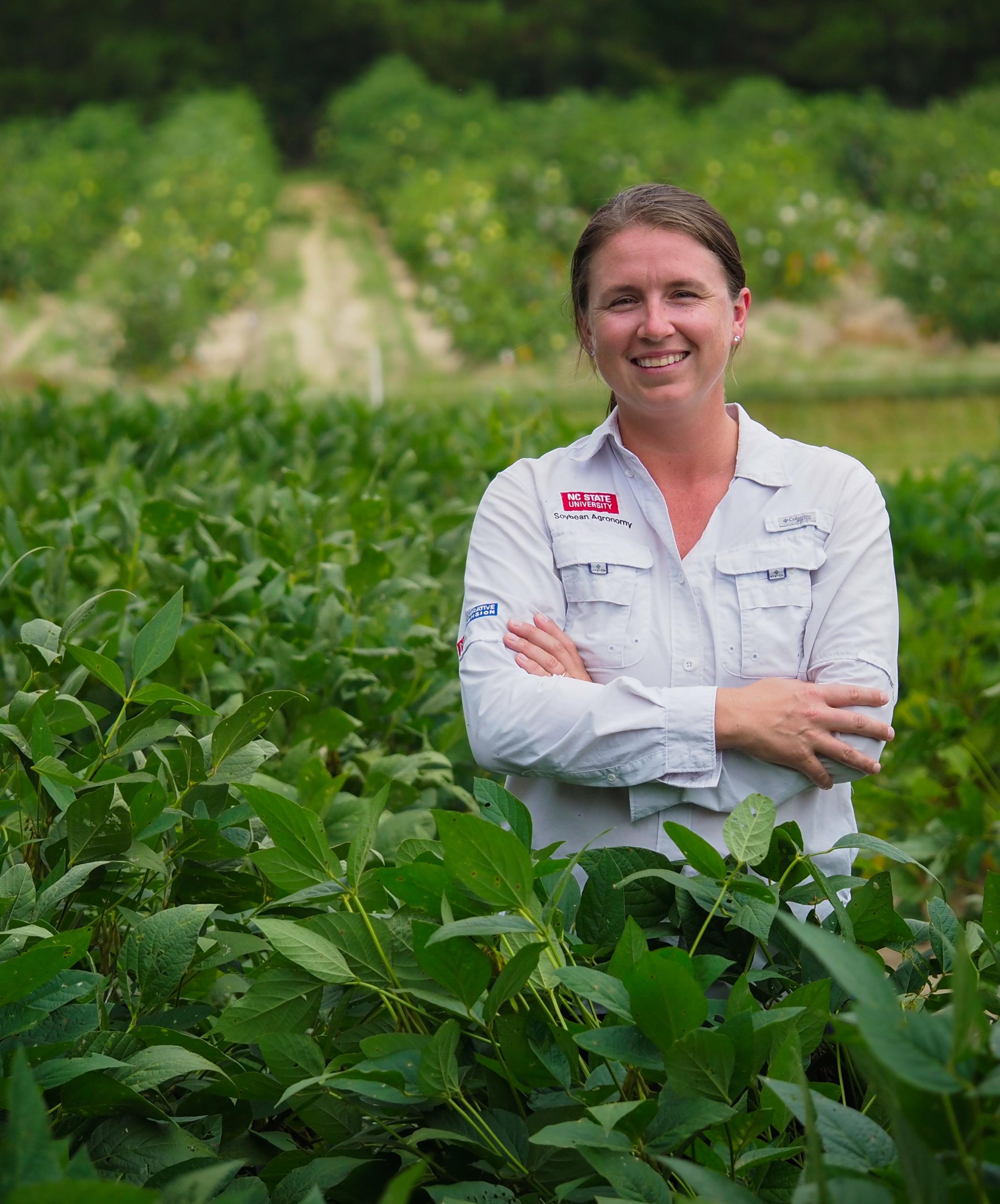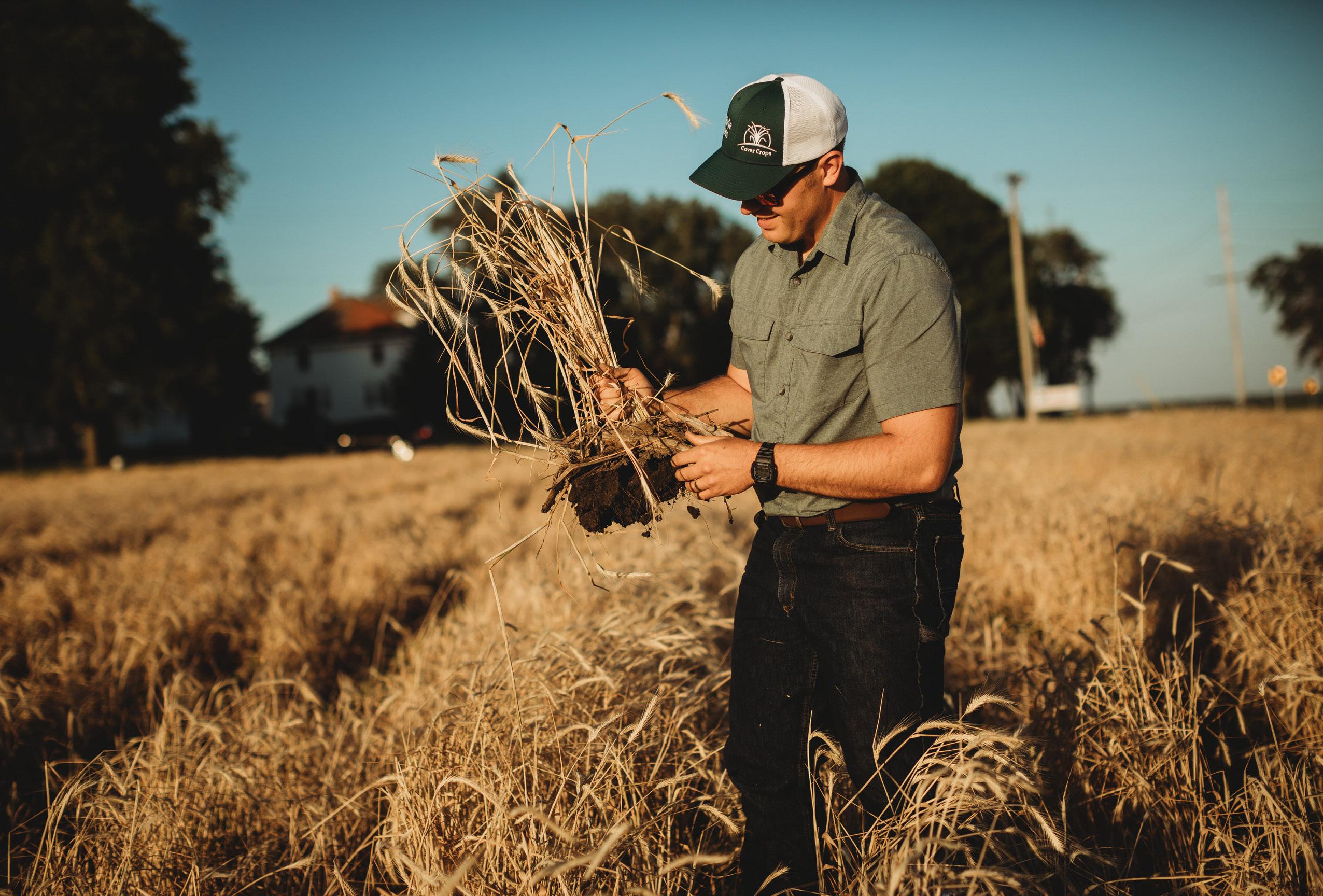
5 minute read
Rooting for You
Rooting for You
By Claire Weinzierl
Advertisement
The power of collaboration is the overarching theme of one of this year’s Soybean Summit keynote presentations.
Dr. Rachel Vann, an Assistant Professor, and Soybean Extension Specialist for North Carolina State University was one of this year’s keynote speakers. Growing up in Geneseo, Illinois, a farming community in Henry County, Vann was exposed to agriculture at a young age through 4-H. She pursued her agricultural interests at the University of Illinois where she studied natural resources and environmental science.
“I feel that I was very well prepared leaving the University of Illinois both academically and with undergraduate research experience to go on and do agricultural research and extension effectively,” says Vann.
So, after graduation, she did just that. Vann made her way to North Carolina State University where she earned her doctoral degree in crop management and now provides leadership for the NC State Soybean Extension Program, which focuses on providing soybean stakeholders across North Carolina with agronomic information that will aid in maximizing soybean yields and protecting quality. Additionally, Vann serves as the NC Plant Sciences Initiative Platform Director for Extension, Outreach, and Engagement and is the lead PI for the United Soybean Board-supported Science for Success project.
In her keynote, ‘Collaboratively Delivering Soybean Best Management Practices,’ Vann provided several examples of the power of collaboration for accelerating the pace and relevancy by which best management practices can be delivered to U.S. soybean farmers. The first example is from an updated generation of planting best management practices that have resulted from the strong relationship between NC State University and the NC Soybean Producers Association. This has resulted in core foundational recommendations across the diverse planting dates in the state and the considerable movement of the RMA replant coverage date for soybeans in North Carolina, a high priority for growers in the state when she started as the NC State Soybean Extension Specialist.
Another example of collaboration highlighted a multidisciplinary cover crop project helping to deliver short-term agronomic and pest-suppressive benefits for soybean production in North Carolina as a result of cover crop use. Instead of focusing on one aspect of cover crop benefits, this project brings together researchers from diverse backgrounds to co-drive management recommendations to maximize short-term benefits and minimize negative pest implications.
“Taking an interdisciplinary research approach to solve some of our bigger challenges is going to be critical,” says Vann. ”You have to have everybody at the table, from agronomists to entomologists, pathologists, and nematologists, working together to provide practical solutions.”

As demands of the soybean industry change, the Science for Success team collaboratively uses applied research combined with historical results to adapt best management practices to future challenges.
“One of the things that I'm really passionate about is using cover crops to maximize both short- and long-term benefits to crop rotation and soybean production,” says Vann. “One of the areas we're really investigating more in North Carolina is the implication of pest dynamics from cover crop use; how can we use cover crop mulches to reduce foliar diseases, insect pressure, and nematode pressure?”
“We’re also looking into the role of brassica cover crops in suppressing problematic nematodes and at more precision cover cropping, and how to provide those short-term benefits for soybean production from cover crop use.”
Vann also stresses that whether in Illinois or North Carolina, growers should select the right cover crop species and the right variety within the species to maximize desired benefits.
“Pay close attention to your end goals when utilizing cover crops. Numerous short-term goals haven't historically been emphasized that can be gained from using cover crops,” says Vann. “And to maximize those benefits, we have to pay very close attention to species selection, even adaptability of varieties within a species and also the management of the cover crops.”
The final example Vann discussed centered on the Science for Success project, which brings together Soybean Extension personnel from across the U.S. who collaboratively deliver best management practices to U.S. soybean farmers through common research protocol execution across the U.S. and an effective summary of QSSB-supported research. Best management practices highlighted included foliar fertilizers, sulfur fertilization, nitrogen fixation under various fertility regimes, and biological seed treatments.
The Science for Success partnership brings together 17 Extension specialists from land-grant institutions across the country, representing more than 80 percent of U.S. soybean acres. These specialists contribute their state-gleaned knowledge and research results to the program. As the demands of the soybean industry change, the Science for Success team collaboratively uses applied research combined with historical results to adapt best management practices to future challenges.
“Science for Success has rapidly catalyzed our ability to deliver best management practices to U.S. soybean farmers by facilitating rapid capture of many environments of data in a short period,” Vann said. “It is a truly excellent way to minimize overlap and maximize the input of checkoff investments.”
As an active soybean specialist in North Carolina with an agricultural background in Illinois, Vann emphasizes the most important advice she can give soybean growers right now is to rely on data-driven strategies from unbiased entities to make management decisions.
“Profit margins can be tight depending on where you're at and your situation. And I think every input matters. So, using data-driven recommendations is critical,” says Vann. And taking a collaborative approach to generating best management practices ensures the most robust management practices can be delivered to the grower.
In case you missed it, you can find out more about the information covered at this year’s Soybean Summit on ILSoyAdvisor.com.









